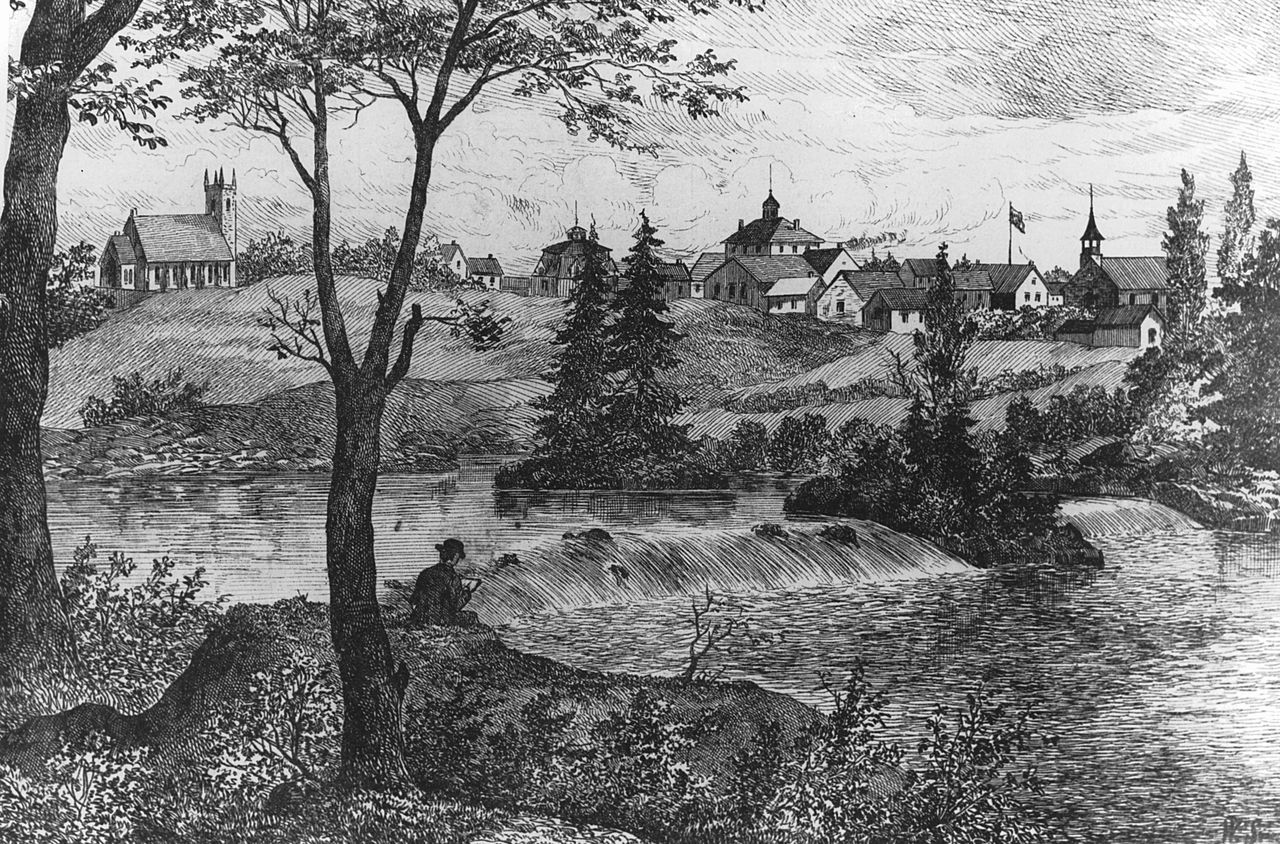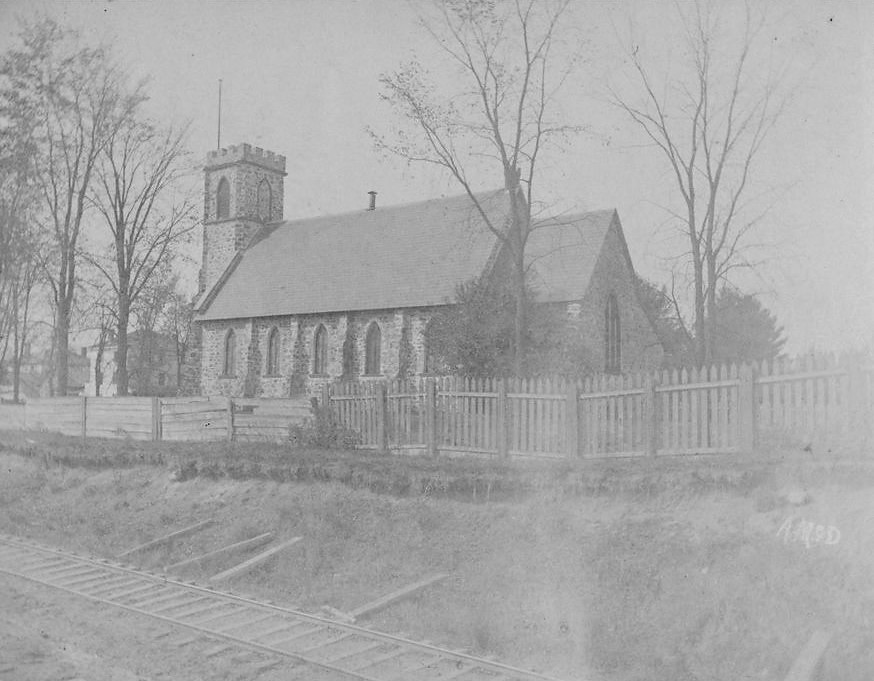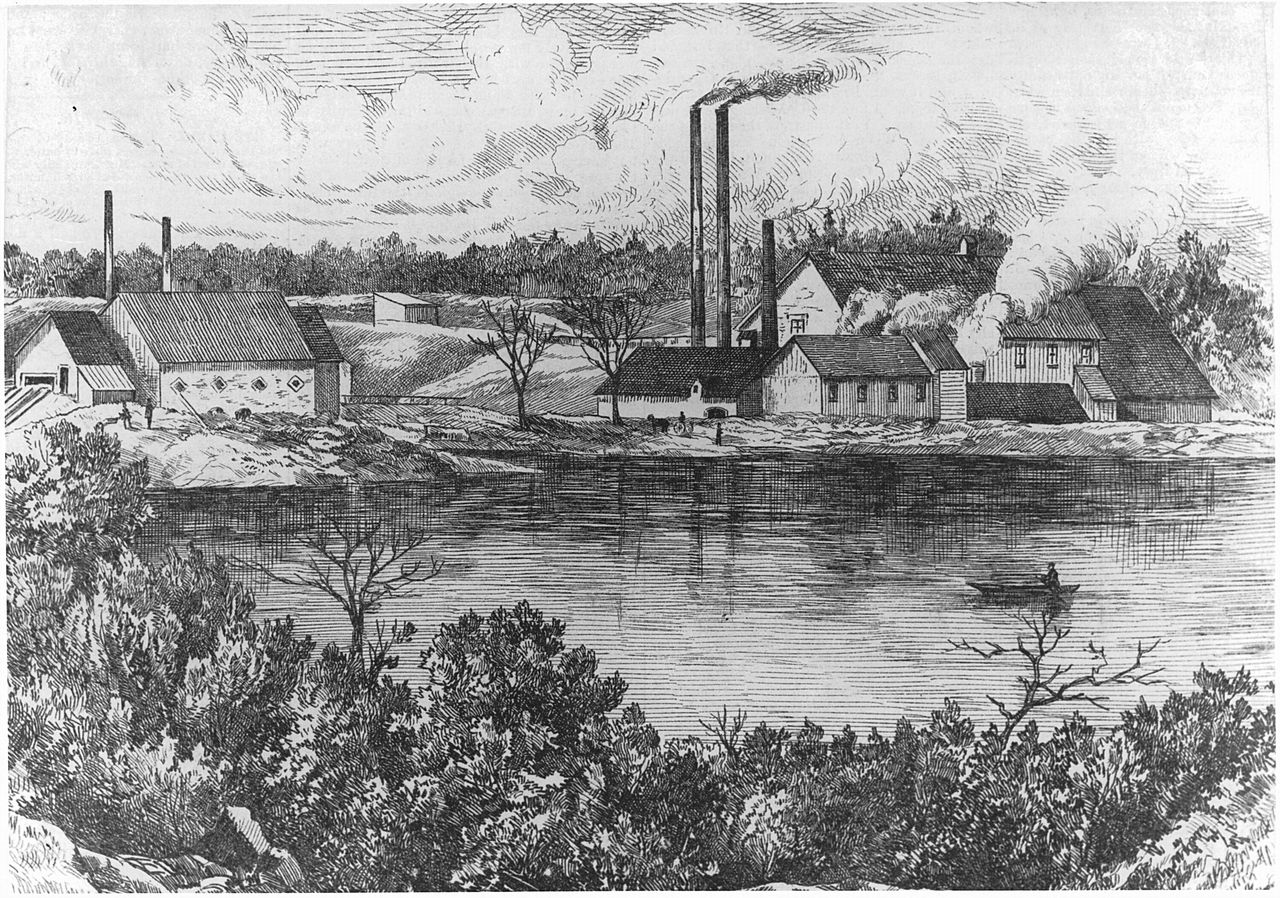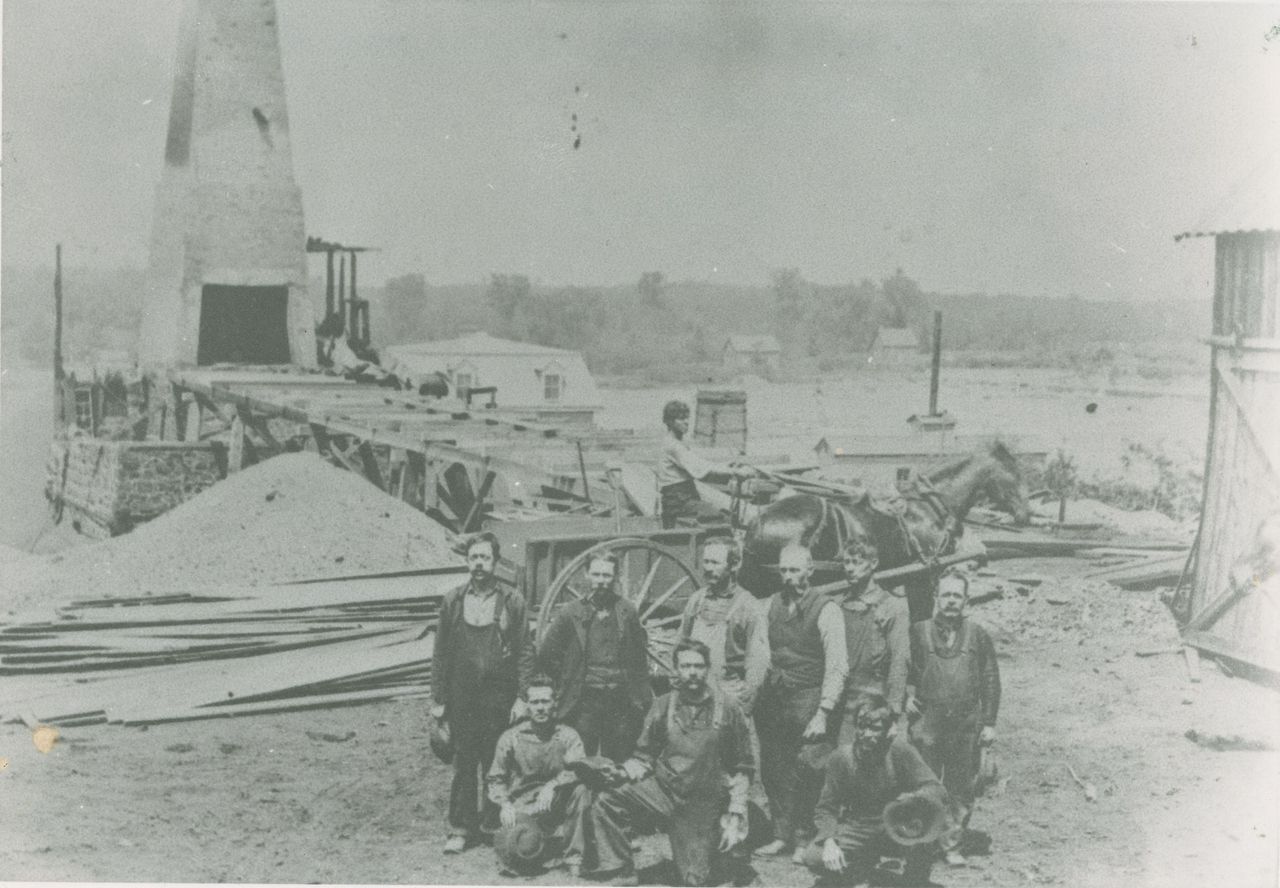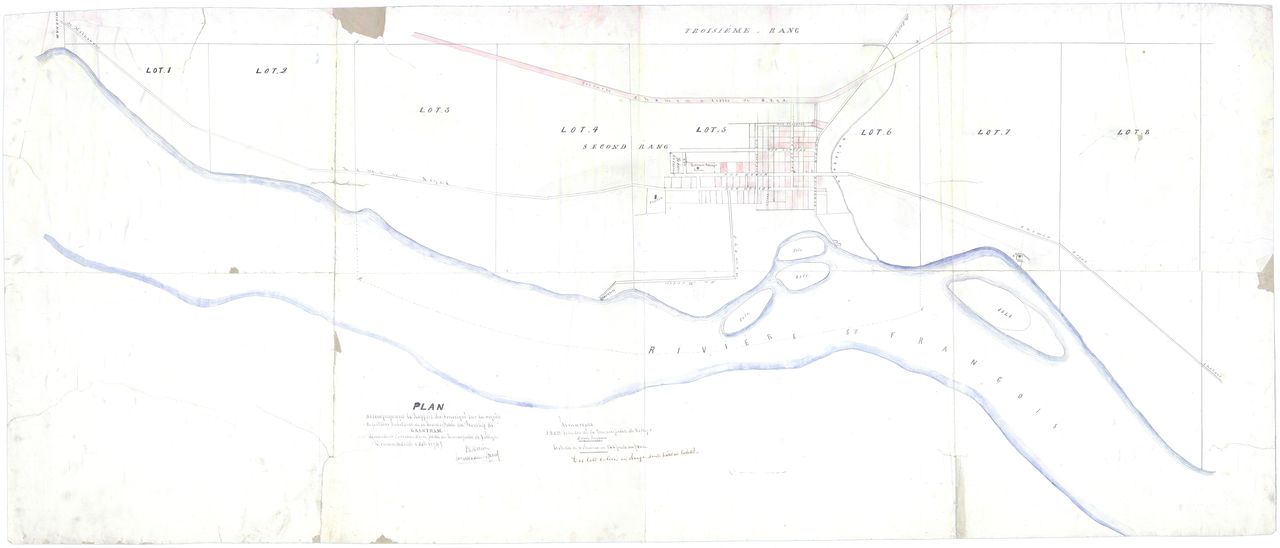Drummondville’s Slow Growth
It took many years for Drummondville to recover from the fire that almost destroyed the little hamlet in 1826. After three decades of growth, the population began to decline in the mid-1840s, fluctuating to reflect periods of local economic growth or recession, eventually reaching fewer than 200 inhabitants in 1865. Important buildings, such as the St. George and St. Frédéric churches and the local Registry Office, were located in the Upper Town, while most businesses, craftspeople, schools, and a building known as the Hall (where the Agricultural Society would hold meetings) were in the Lower Town, which was also the site of most residential buildings. Drummondville only officially attained the status of a village in 1874, and later of a town in 1888.
At the time, the main driver of economic growth was the transformation of raw materials; a few businesses sprang up and prospered for a short while, namely the Cooke Mill and the Shaw & Cassils Tannery, which were both located on the north shore of the St. Francis River in the 1860s. Industrialization in Drummondville only really got underway in 1880, with the arrival of the John McDougall & Company ironworks. The company’s blast furnaces produced pig iron through locally extracted iron limonite, until the company shut down in 1911.
At the turn of the 20th century, businesses characterized by small workshops gave way to larger manufacturers on the scale of McDougall’s ironworks. Other industries began to set up shop: Maple Clothing (shirts) in 1898; the Eureka Cigar Factory (cigars) in 1899; J. A. Gosselin Ltd (equipment for butter and cheese factories) in 1902; the Improved Match Factory (matches) in 1905; Charbonneau Shoe Factory (shoes) in 1905; the Campbell MacLaurin Lumber Company (sawed timber) in 1908; Demers Clothes Pin (clothespins) in 1911; and the Walsh Plate and Structural Works (steel and iron beams) in 1912.
Together with the fact that Drummondville was first connected to the railway in 1872, and more importantly to the Drummond County Railway in 1887, this new industrial sector contributed to the economic development of the town. The population grew to 1,725 inhabitants by 1911. This economic expansion led to the establishment of small supporting business and services. Two prominent schools opened their doors over a short period: The Soeurs de la Présentation de Marie in 1875 (a boarding school run by a religious order of nuns), and the French language day school, Collège Saint-Frédéric des Frères de la Charité in 1906. A general store run by Jean-Napoléon Turcotte opened in the town centre in 1880, while the hotel Manoir Drummond was opened in 1907 by brothers Ludger and Wilfrid Grégoire. The Post Office was built in 1900; in 1910 the hospital, l’Hôpital Sainte-Croix, welcomed its first patients in a building that had previously housed the Corona Hotel.


